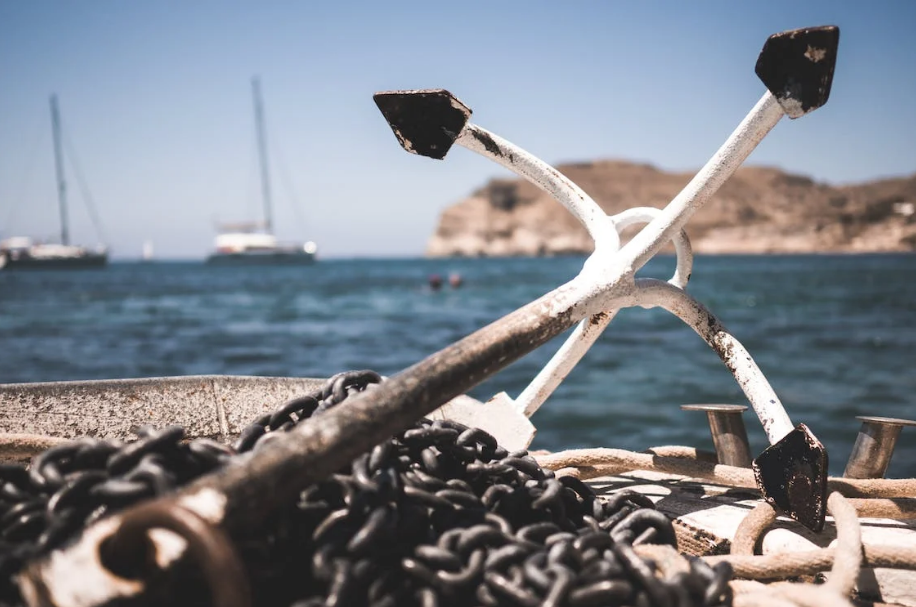Every boater should learn how to anchor a boat, even if they don't expect to anchor very often. An anchor can hold your boat in place for a few hours of swimming or an overnight stay in a secluded cove, but it's also an essential safety item. The anchor will prevent wind or current from drifting your disabled boat onto a shoal or ashore, where it could be damaged if the engine fails. If you are searching for a boat towing service in Texas, look no further than flagship towing.
A good seamanship guide or course will go into much more detail, so let's just cover the basics here
How to Anchor a Boat
You will need to determine the water depth where you will drop the anchor.
Determine the correct anchor scope (a 7:1 ratio is recommended).
Secure the rope to the bow cleat after lowering the anchor and letting out enough scope.
Use landmarks or onboard electronics to measure movement to ensure there is no drag.
Reset the anchor if necessary.
Pull the rope in slowly as you motor toward the anchor to retrieve it.
Never tie an anchor to a boat's stern.
An overview of anchor types
There are two types of pleasure boat anchors: flukes (often called Danforths) and plows or scoops.
Fluke anchors are popular with small and medium-sized boats because they fold flat, are lightweight, and are easy to handle. When applied to a sand or muddy bottom, it offers excellent holding power, but it is less effective when applied to a rocky bottom.
The plow-style anchor is more common on heavier boats and holds well in most bottom conditions, as well as resets itself if the wind shifts. As it does not fold and is usually heavier than the fluke anchor, it is better suited to boats with a bow roller and windlass rather than an anchor locker. On most family powerboats, the road connects the anchor to the ship with a chain at the anchor end and a nylon line (rope) from the chain to the boat.
To determine which anchor size is appropriate for your boat, refer to the anchor manufacturer's instructions.
Setting an Anchor
Check the depth of the water where you plan to drop anchor using a depth finder if you have one on board. Anchor scope is the ratio between the length of the anchor road you want to pay out and the depth of the water.
When there is room, a scope ratio of 7:1 (seven feet of scope to one foot of water depth) is usually recommended. Drop the anchor 70 feet beyond where you want the boat to lie on anchor, if the water depth is 10 feet, for example.
If there is no wind or current, you can move the boat in reverse that distance or let the wind or current carry you back 70 feet.
After you've let out enough scope, secure the rode to a bow cleat.
To set the anchor in the bottom, apply some power in reverse.
There is no anchor drag
Make sure the anchor is set and not dragging on the bottom. To sound an alarm, you can sight two landmarks on shore or use electronics such as GPS, a chart plotter, or a depth finder. The boat may reset itself on the bottom if the wind, current, or tide changes and causes it to swing over the anchor. You'll need to re-set the anchor if it doesn't. When anchoring, it's important to stay vigilant at all times.
Retrieving the Anchor
While pulling in the road, slowly motor towards the anchor.
You should be able to pull the anchor free when you are directly over it. First, try slowly turning the boat in a large circle to change the direction of pull on the rope if it's stuck.
Pull up the rode until the boat is directly over the anchor, then turn the line around a cleat.
As the bow dips in a wave, pull the anchor taut so that when the next wave lifts the boat, the anchor may be released.
Here are some additional anchoring tips
Here are a few additional factors to consider when anchoring a boat:
After securing the rode to a stern cleat, never tie off an anchor to the stern of the boat or try to pull up a stuck anchor with the engine.
Water may come over the stern and fill the boat if you lower the stern low enough.
A stuck anchor should be replaced if you can't release it.
what is the correct ratio of scope of anchor rode to water depth for a boat anchoring for overnight stay?
The recommended ratio of scope of anchor rode to water depth for a boat anchoring for overnight stay is 5:1. This means that for every 5 feet of water depth, the anchor rode should be at least 25 feet in length.

